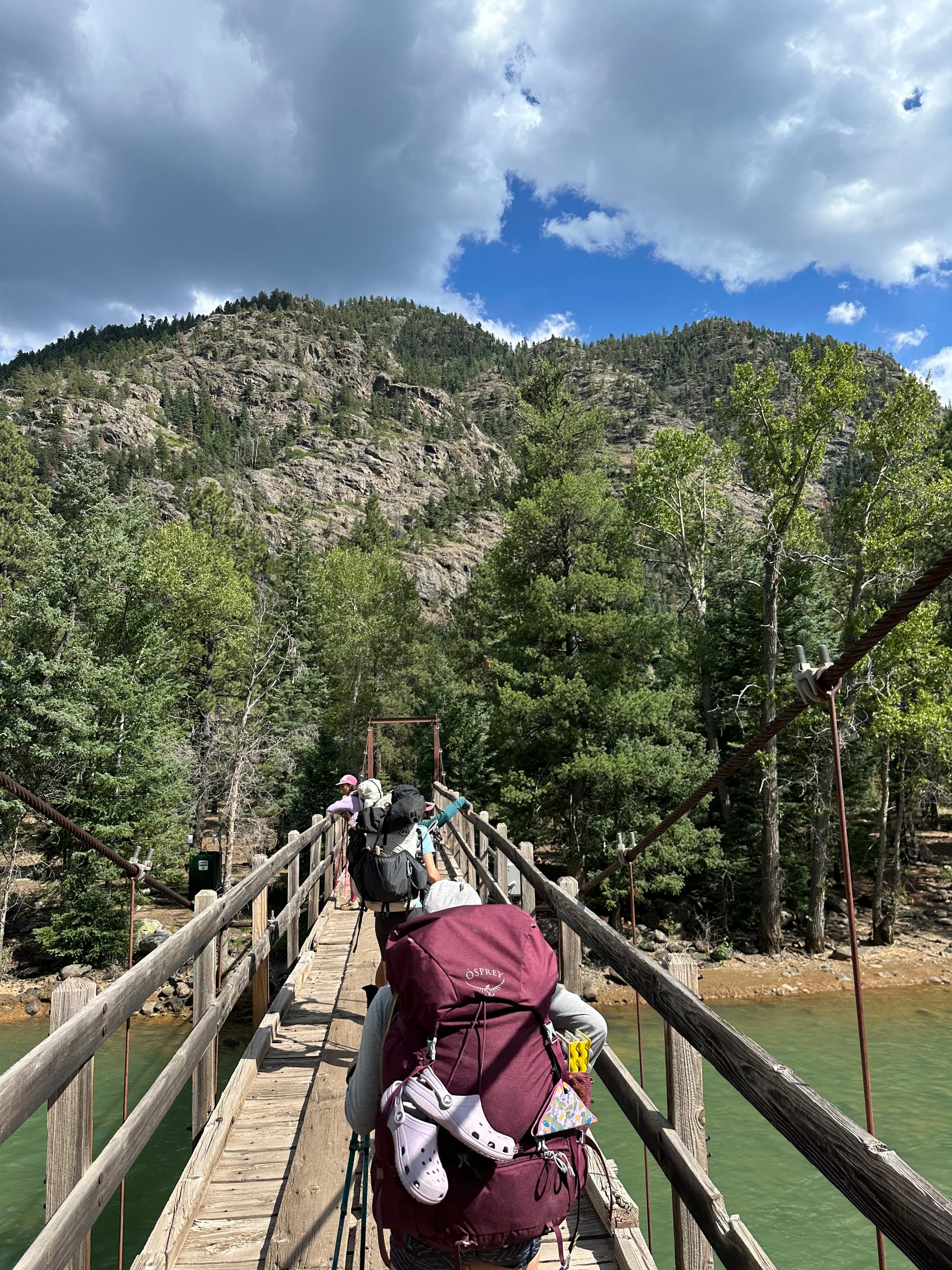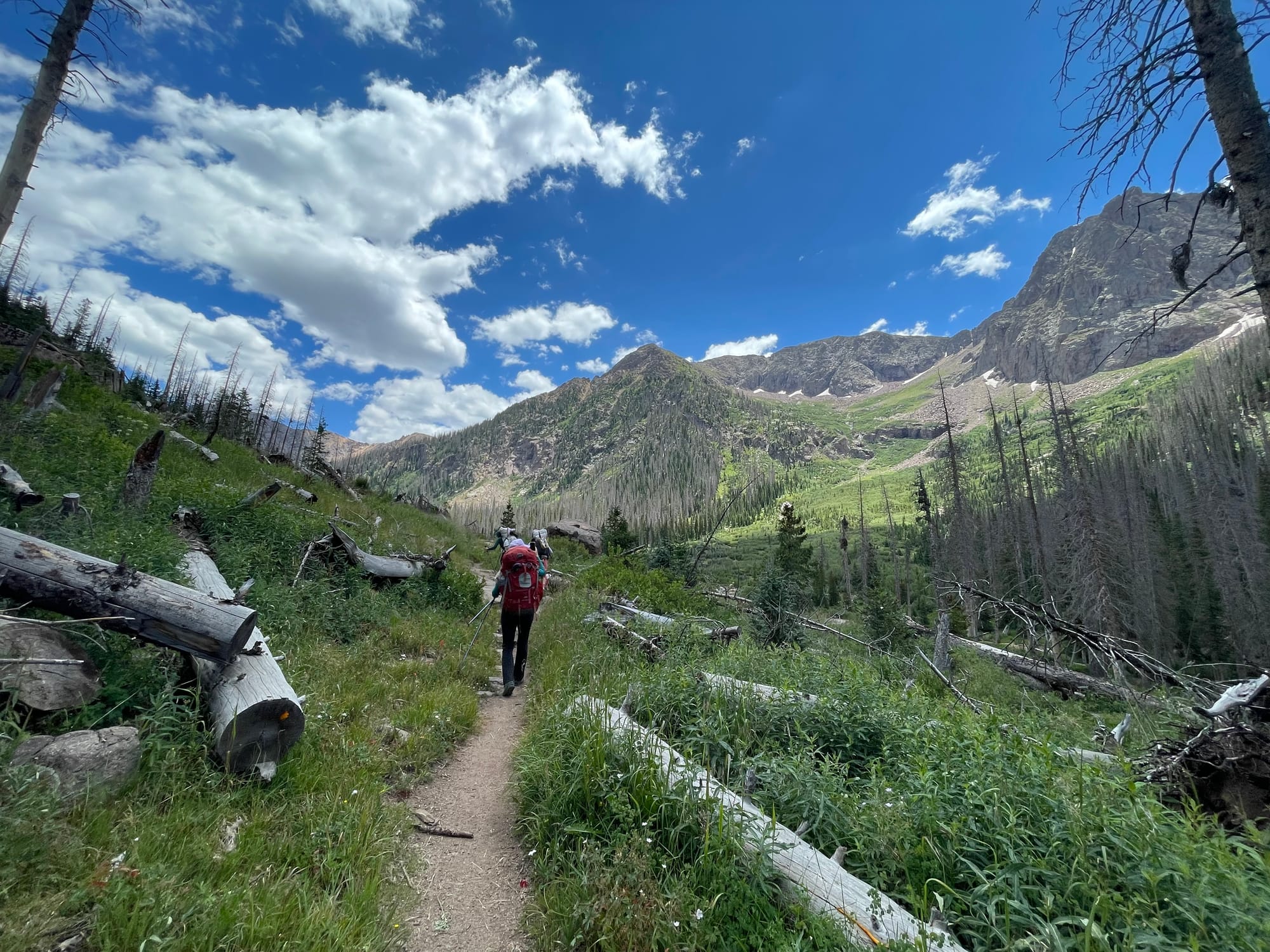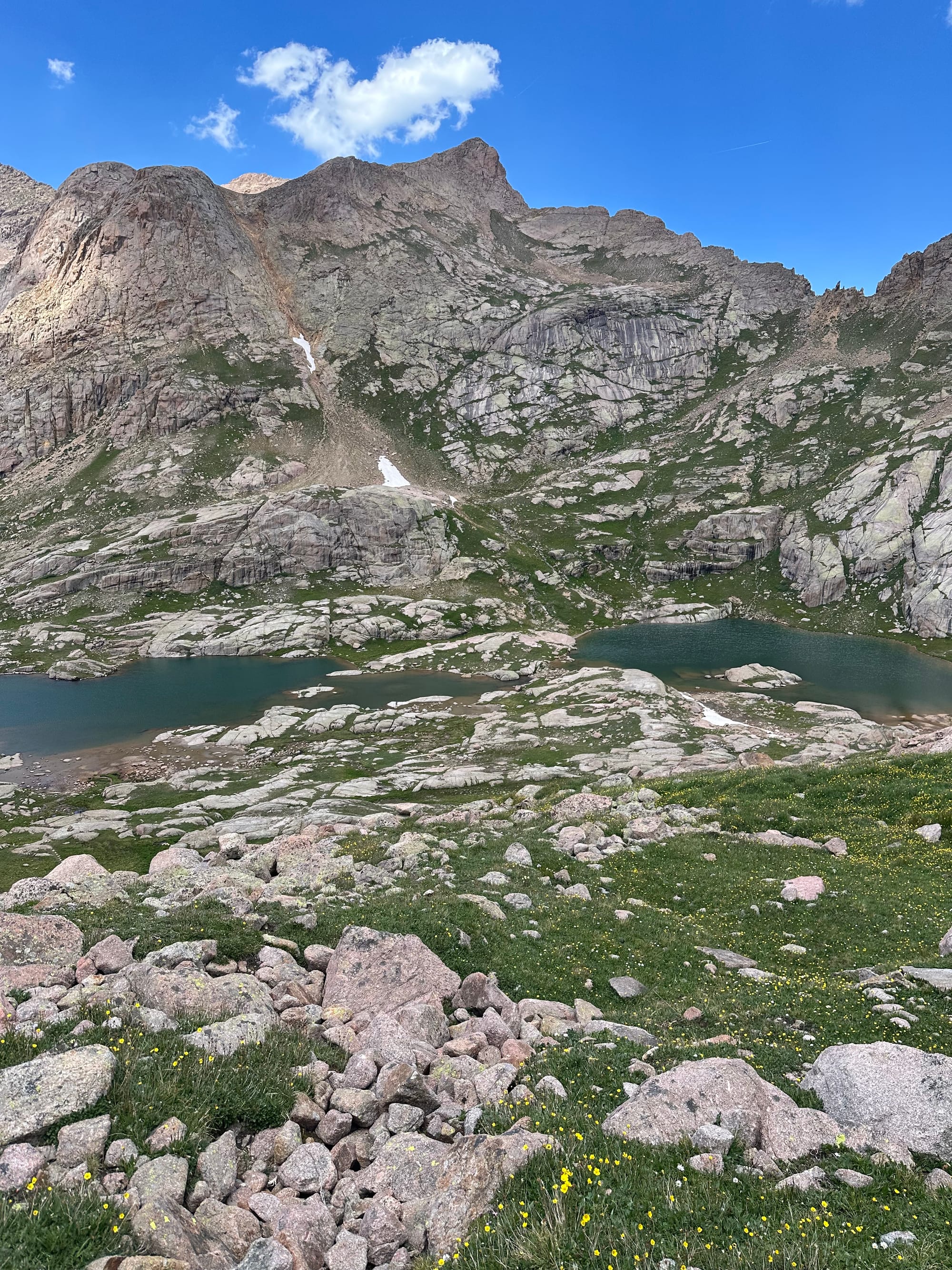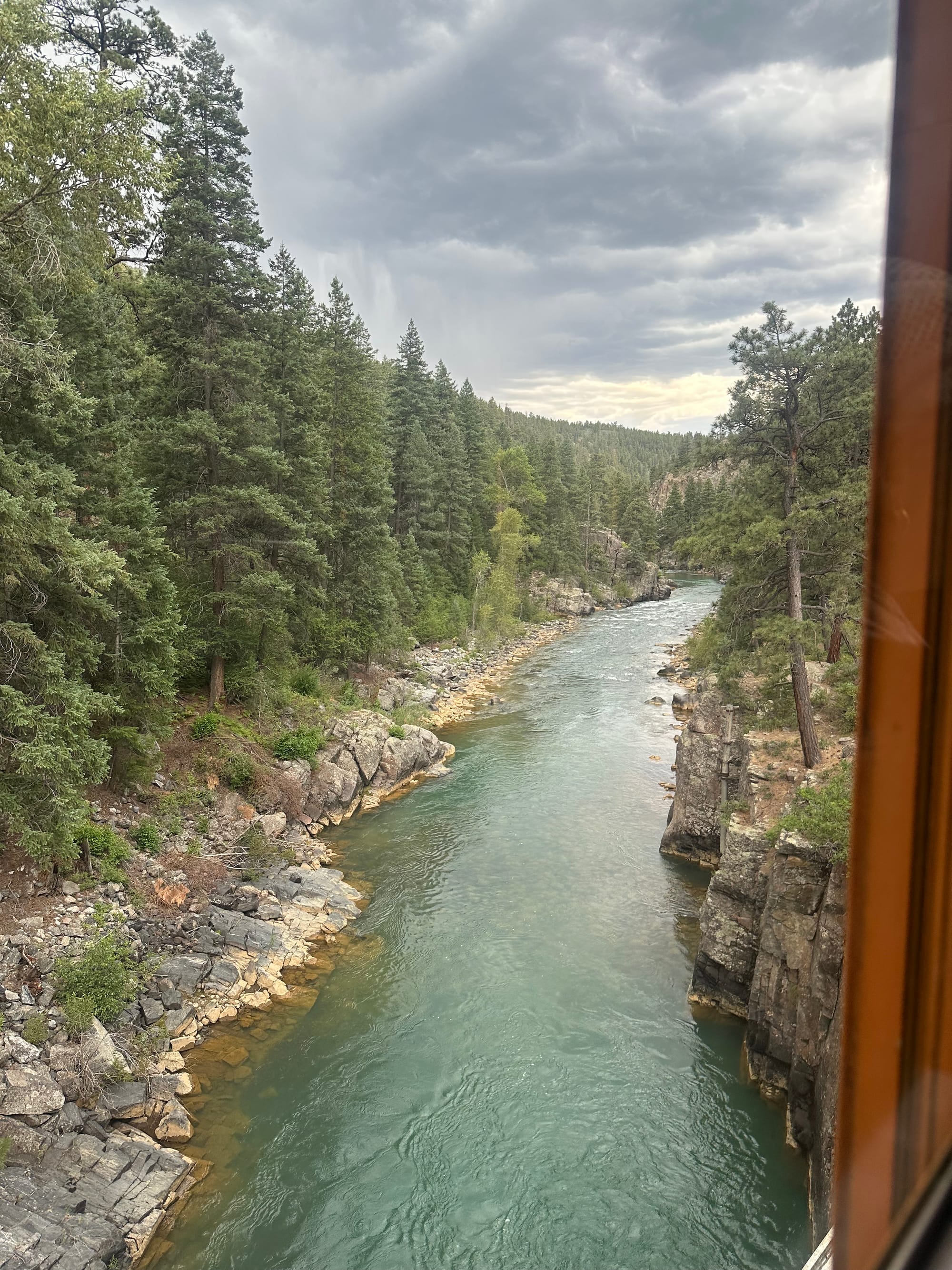Backpack Chicago Basin
Nestled deep in the Weminuche Wilderness, Chicago Basin offers one of Colorado's most spectacular multi-day hiking experiences. And lucky for us, it's easily accessible if you're willing to put in the steps.

Nestled deep in the Weminuche Wilderness, Chicago Basin offers one of Colorado's most spectacular multi-day hiking experiences. This remote alpine basin serves as base camp for climbing four magnificent 14ers: Windom Peak, Sunlight Peak, Eolus, and North Eolus. But even if peak bagging isn't your thing, the basin itself rewards visitors with pristine alpine lakes, wildflower meadows, and some of the most dramatic mountain scenery in the lower 48. And lucky for us, it's easily accessible if you're willing to put in the steps. Read on for more tips on how to backpack in Chicago Basin.
Why Chicago Basin Should Be on Your Bucket List
Chicago Basin isn't just another backpacking destination; it's a wilderness sanctuary that combines rugged mountain beauty with genuine adventure. The basin sits at an elevation of over 11,000 feet, surrounded by jagged peaks that pierce the sky. The journey requires commitment: you're embarking on a multi-day expedition with no cell service, limited resupply options, and weather that can change in a matter of minutes.
But that's exactly what makes it magical. This is old-school Colorado wilderness at its finest.
The Complete 4-Day Itinerary
Day 1: Purgatory Flats to Animas River (6 miles, -700 ft elevation)
The Journey Begins
Your adventure starts with a 35-40 minute drive from Durango to the Purgatory Flats Trailhead, located across from Purgatory Ski Resort. Look for the small parking lot by the pond; the trailhead is directly across the road.
The first day is a fairly gentle introduction, with the trail descending along Cascade Creek to meet the mighty Animas River. This downhill start feels almost too easy, but don't worry, you'll earn every foot of that elevation back and more in the coming days.
At 4.2 miles, you'll encounter your first camping option at a pleasant flat area. If you're looking for a shorter first day or traveling with less experienced hikers, this makes an excellent overnight spot.
For those continuing, cross the wooden bridge over the Animas River where the trail turns into the Animas River Trail (not to be confused with Durango's paved recreation trail). This riverside trail offers numerous camping opportunities as you make your way toward tomorrow's big climb. A great camping option is around 6 miles from the Purgatory Flats TH.

Pro Tip: The Animas River Trail offers steady, relatively flat hiking. Use this time to settle into your backpacking rhythm and take in the stunning views of the river. Do not over-exert yourself on Day 1!
Day 2: The Big Push to Chicago Basin (7.5+ miles, +3,000 ft elevation)
Welcome to the Real Adventure
Day 2 separates the casual hikers from the serious adventurers. You'll continue on the Animas River Trail until you reach the Needleton Johnson Creek Trail junction - where the real work begins.
Important Navigation Note: When you cross the bridge, turn RIGHT to access the Needleton Johnson Creek Trail. Turning left leads to the Needleton train station – save that knowledge for your exit strategy.
The climb to Chicago Basin is relentless but rewarding. You're gaining 3,000 feet in less than 4.5 miles, which means sustained uphill hiking through diverse terrain. The trail winds through dense forest before opening into the spectacular alpine basin that will be your home for the next two nights.

Chicago Basin itself is breathtaking, a wide, glacially-carved valley surrounded by towering peaks. Multiple camping areas offer varying views and levels of wind protection. Choose your spot wisely, as this will be your base camp for peak attempts. It's also best to choose a camping spot with easy access to water for purposes of drinking, cooking, cleaning, and also fun-having 😄
Day 3: Conquering the 14ers
Peak Bagging Day
With your camp established, Day 3 is devoted to the main event: climbing Colorado's magnificent fourteeners. You have several options depending on your experience level and ambition:
Single Peak Option: Windom Peak. Windom Peak is considered the most accessible of the four 14ers, making it ideal for novice peak baggers. The route is well-cairned and follows a clear trail for most of the ascent. From your Chicago Basin camp, head back toward the Needleton Johnson Creek Trail, then turn left onto the Chicago Basin Trail.
The route takes you past the stunning Twin Lakes before the final push to Windom's 14,087-foot summit. The total distance is approximately 7 miles round-trip, with manageable technical difficulty.
Double Peak Options:
- Sunlight and Windom: A popular combination that extends your day but rewards you with two summits
- Eolus and North Eolus: More technical climbing that requires scrambling experience
The Ultimate Challenge: Experienced mountaineers sometimes attempt all four peaks in a single day. While possible, this creates an extremely long and demanding day that should only be attempted by those with significant climbing experience.

Pro Tip: The most beautiful views can be had from simply hiking to Twin Lakes and back. No interest in peak bagging? No problem!
Safety First: Weather changes rapidly at altitude. Start early, watch for afternoon thunderstorms, and don't hesitate to turn back if conditions deteriorate.
Day 4: The Great Escape (5.3 miles, -2,550 ft elevation)
Two Ways Home
Your final day presents an interesting choice that adds a unique element to the Chicago Basin experience:
Option 1: The Historic Train Route (Recommended) Hike down from Chicago Basin to the Needleton train station – a descent of 5+ miles losing 2,550 feet of elevation. This downhill finish is much easier on tired legs and worn-out knees. At Needleton, you'll board the historic Durango & Silverton Narrow Gauge Railroad for a scenic journey back to Durango.
The train ride is more than just transportation – it's a step back in time. The vintage steam locomotive chugs through spectacular canyon scenery as you relax and reflect on your wilderness adventure. It's the perfect way to decompress after days in the backcountry.

Option 2: Hike Out Via Purgatory Flats. For purists who want to complete the entire journey on foot, you can retrace your steps back to the Purgatory Flats Trailhead. This option covers nearly 14 miles with 1,800 feet of elevation gain – a significant undertaking after three days of hiking.
One advantage: you may arrive back in Durango well before the train, depending on your start time and the pace of your hike. The train departs at 3:00 p.m., and you're back in Durango around 5:00 p.m.
Essential Planning Information
Best Time to Visit
Late July through early September offers the most reliable conditions. Snow can linger in the basin well into July, while September brings the risk of early winter storms.
Permits and Regulations
No permits are required for Chicago Basin, but standard wilderness regulations apply.
Practice Leave No Trace principles religiously – this pristine environment depends on it.
Safety
For your personal safety, it's best to have a method for communicating with an emergency contact via satellite, such as an iPhone, Garmin InReach, or another device. We could see smoke from a nearby wildfire while we were in the basin, and it was nice to be able to communicate with someone in town to understand the fire's location. Maps with the trails and the surrounding area should be downloaded or printed, and an "escape route" in case of a wildfire should be planned ahead of time. More information can be found in the detailed itinerary (See below).
What to Expect
- No cell service once you leave the Durango area.
- Highly variable weather, including possible snow any time of year.
- Cold temperatures at night, even in the height of Summer.
- Stream crossings that can be challenging during the Spring snowmelt season
- Wildlife encounters, including black bears, mountain goats, and marmots!
Train Schedule Considerations
If you're planning to use the train for your exit, book your tickets well in advance, especially for summer weekends. The Durango & Silverton Narrow Gauge Railroad operates on a schedule, and missing your train means either waiting for the next one or hiking out the long way.
Final Thoughts: A Challenging But Unique Expedition
This isn't a casual weekend trip; it's a wilderness expedition that requires proper preparation, physical fitness, and mental readiness for challenging conditions. The rewards, however, are extraordinary.
Few hiking experiences combine the raw beauty of Colorado's high peaks with the unique charm of historic train travel. Whether you're bagging your first 14er or adding to an impressive peak list, Chicago Basin offers an adventure that will stay with you long after you've returned to civilization.
Ready to Plan Your Chicago Basin Adventure?
While this guide provides an essential overview, successful backcountry trips require detailed planning. If you're ready to turn this dream into reality, I've created a comprehensive Chicago Basin itinerary that takes the guesswork out of your planning.
Get the Complete Chicago Basin Itinerary & Planning Guide →
This detailed guide includes:
- Trailhead locations and campsite recommendations with GPS coordinates
- Complete packing checklist tailored for Chicago Basin conditions
- Planning strategies including backup plans & hike paces
- Insider tips covering
- Train booking information
- Planning logistics and hike paces
- Water access
- Dealing with critters
- Safety considerations, escape routes, and communication
Don't leave your safety and success to chance – get the detailed planning tools you need for an unforgettable Chicago Basin experience!
